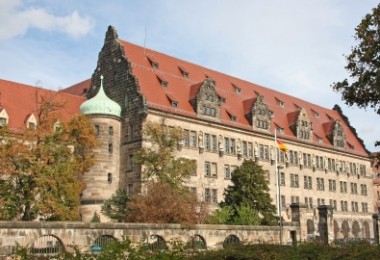Translation Romani has decided to maintain use of the word Romani in all language versions of this website, inclusively and in reference both to the language and people of all the diverse ethnic communities throughout the world, i.e. Roma, Sinti, Manuš, Calé, Romanichal, Kalé, and many others. Please read the important notes from our translators for explanations and other translations currently in use locally, nationally or regionally.
Close this box.
The young academic discipline of Interpreting Studies, mapped out as such only in the early 1990s, is still actively in phase of development. Akin to Translation Studies, the historical evolution of Interpreting Studies has advanced from an origin rooted in commentaries and observations on practice to an international interdisciplinary field replete with diverse theoretical and empirical models, methodologies and paradigms. Indeed, interpreting (or interpretation) continues to engage and benefit from useful research in other disciplines like sociolinguistics, psycholinguistics, pragmatics, discourse analysis, cognitive psychology, neuropsychology, neurophysiology, cross-cultural communication, information sciences, and artificial intelligence, among others.
Myriad circumstances and events have contributed to consolidating a foundation for the field. After the interpreting sessions conducted by Paul Mantoux in 1919 at the Paris Peace Conference, the first generation of trained simultaneous conference interpreters (from Mannheim and Heidelberg) would deploy their skills at the Nuremburg Trials (1945-1946), and within the newly formed United Nations. Throughout the 1960s and 1970s, Otto Kade and the "Leipzig School" in Germany, and Ghelly Chernov and the "Soviet School" in Russia, would bring linguistics-based Translation Studies and psycholinguistics, respectively, to studies on interpreting. Danica Seleskovitch and the "Paris School", notably the École Supérieure d`Interprètes et de Traducteurs (ESIT), would establish courses in theory and method and lay the groundwork for interpreter training in France. These inaugural steps focused principally on conference interpreting, in both simultaneous and consecutive modes. Major conferences in 1986 (Trieste, Italy), 1994 (Turku, Finland), and 1995 (Geneva Park, Canada) further consolidated these beginnings by advocating more scientifically based empirical research. Recent international collaboration among interpreting professionals and academics has proven particularly productive, bringing into Western academic discourse the significant traditions of practice in non-Western countries like Japan, China and India. Since the 1990s, interpreting in the public service domain, i.e. community interpreting, has also been rapidly gaining in importance. This broad category includes interpreters who interpret for services in health care (physical and mental), at hospitals and courts, in police precincts, at immigration and asylum hearings, in schools, and for many other social services. Linked closely to global migration trends, immigration and local migrant communities, community interpreting concerns itself with sociological and ethical matters, in addition to practical training to enhance cognitive abilities and skills. Community interpreters not only mediate language and culture but also a wide range of diverse social, ethnic and racial tensions, including societal and institutional stereotypes and prejudice.
Research in Interpreting Studies emerged with the establishment of academic programs and the publication of literature on the subject. They generally focus on three main areas: cognitive processing, professional concerns, and training. Studies investigate linguistic issues in relation to cognitive load (Effort Models), the working memory of interpreters, and brain functions and activation patterns while interpreting. User expectations, evaluations and reactions as indicators of quality are other substantial areas of research, as are the social roles of interpreters in different contexts, language directionality, and involvement versus detachment while community interpreting for public services. Of ongoing importance are the traditional concerns for fidelity and accuracy with regard to transfer of meaning, and errors and omissions. The 21st c. has witnessed a proliferation of interpreting activity and research. This includes signed language interpreting, dialogue or remote interpreting, video remote interpreting, speech-to-speech translation systems, and development of tools and technologies for data collection and analysis on speech corpora. The instantaneousness and spontaneity associated with interpreting are likewise finding new forms in bilingual and multilingual settings online, from entertainment to interpreter-assisted medical aid, which will undoubtedly contribute to Interpreting Studies research for years to come.
References:
Baigorri-Jalón, Jesús (2004), Interpreters at the United Nations: A History, Salamanca: Ediciones de la Universidad de Salamanca.
Baker, Mona and Gabriela Saldanha (eds), Routledge Encyclopedia of Translation Studies. 2nd Edition, London / New York: Routledge, 2009.
Gaiba, Francesca (1998), The Origins of Simultaneous Interpretation: The Nuremberg Trial, Ottawa: University of Ottawa Press.
Gambier, Yves and Luc Van Doorslaer (eds), Handbook of Translation Studies. Vol. 1, Amsterdam / Philadelphia: John Benjamins Publishing Company, 2010. Also online. Translation Studies Bibliography Online (2004).
Hale, Sandra Beatriz (2007), Community Interpreting, Hampshire / New York: Palgrave Macmillan.
Pöchhacker, Franz (2004), Introducing Interpreting Studies, London / New York: Routledge.
Pöchhacker, Franz and Miriam Shlesinger (eds), The Interpreting Studies Reader, London / New York: Routledge, 2002.

Lashi diminyatsa (Kalderash)
Lačhi teharin (Gurbeti)
Lashi detehara! (Lovari)
Latcho/Sukar sabaj (Xoraxane)


